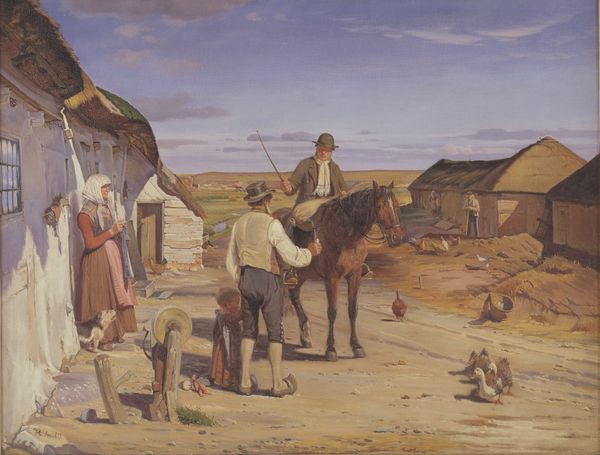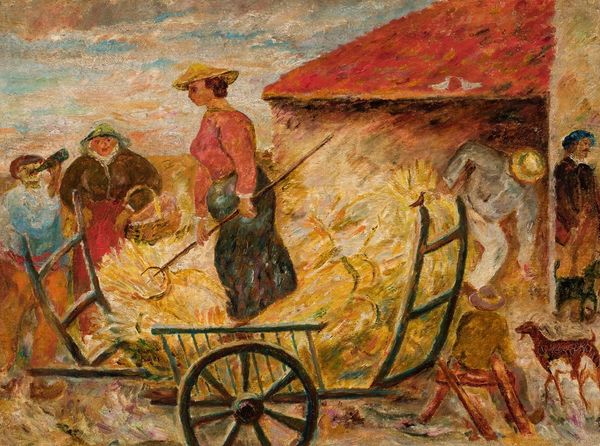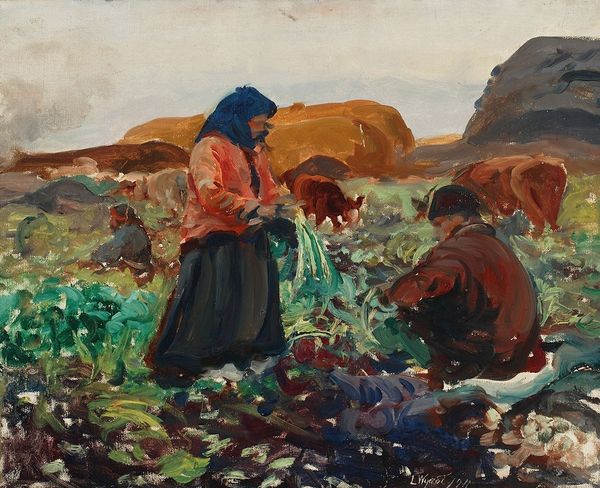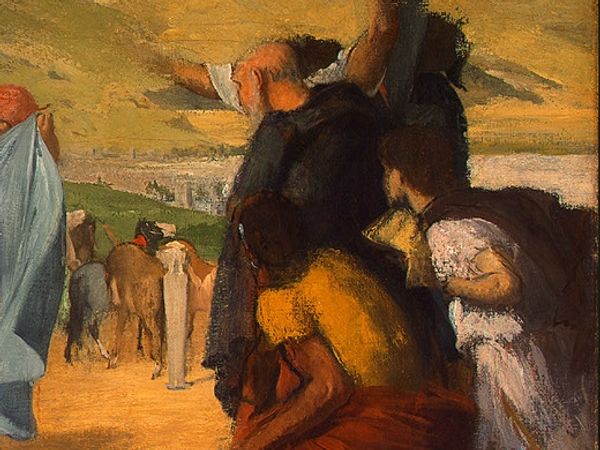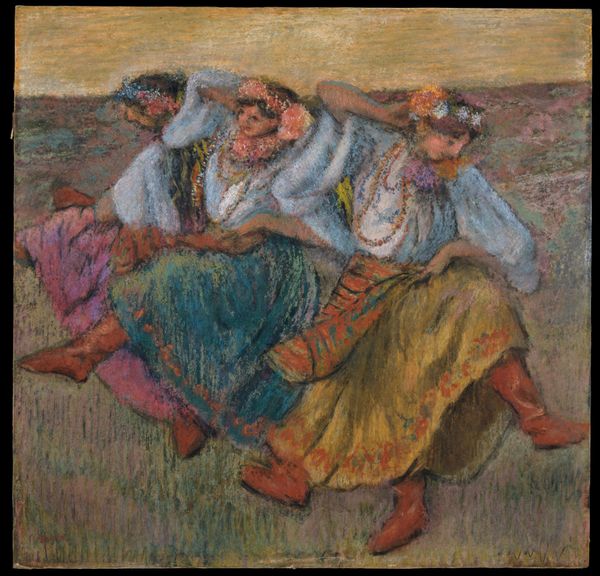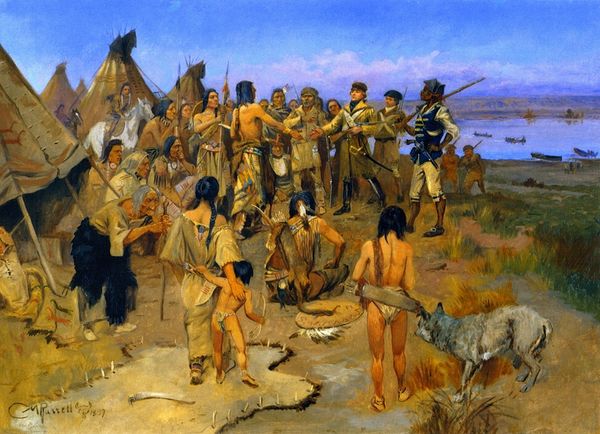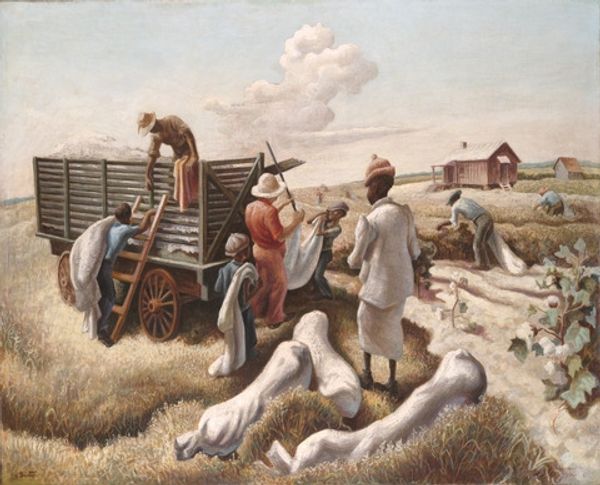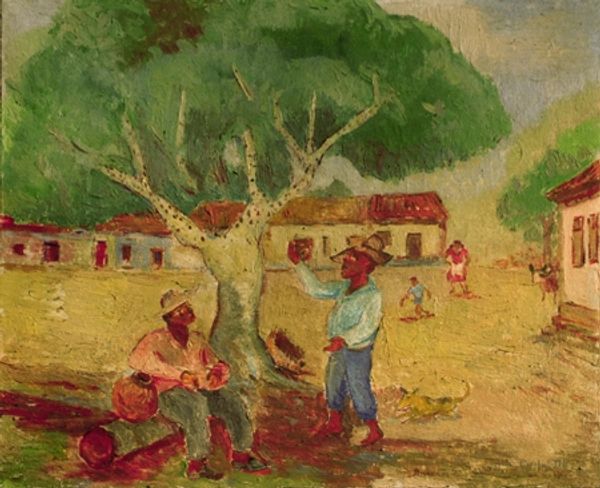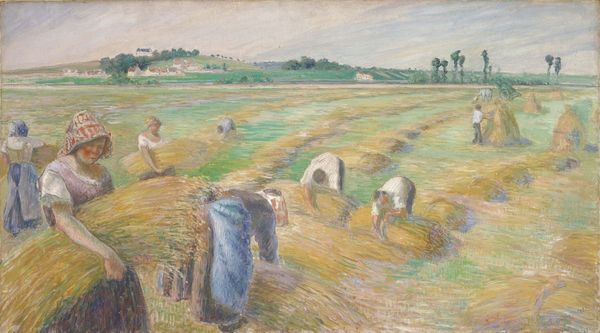
painting, oil-paint
#
painting
#
oil-paint
#
landscape
#
figuration
#
oil painting
#
genre-painting
#
history-painting
#
regionalism
Dimensions: 72.6 x 91.1 cm
Copyright: Thomas Hart Benton,Fair Use
Editor: So, this is Thomas Hart Benton's "Cotton Pickers, Georgia," painted in 1929. The way he's depicted the workers almost seems...monumental, despite the reality of their circumstances. How do you interpret this work, especially considering the time it was made? Curator: That monumentality is key, isn't it? Benton was working within the Regionalism movement, which, at its best, aimed to depict the everyday lives of Americans. But we must always be critical of whose stories are being told, and how. What’s present, and what’s glaringly absent here? Editor: I see figures toiling away at cotton harvesting, a mule and wagon ready for a full load, what appears to be housing…Absences, well, perhaps a deep sense of the economics driving all of this, of race relations… Curator: Exactly. Look at the stylized depiction of labor. There's a romanticized notion of the rural South here, one that conveniently ignores the brutality of the Jim Crow era and the legacy of slavery upon which this scene is built. The workers appear strong, yes, but also anonymous, flattened into types. Is there an agency in this depiction, or a perpetuation of power dynamics? Editor: I see what you mean. The focus is on the activity, the cotton itself, almost at the expense of the individuals. The bright colors make the scene seem almost idyllic. It's disturbing that it masks the oppression beneath the surface. How can we view works like this critically, acknowledging their aesthetic qualities, while confronting their problematic historical context? Curator: That’s the ongoing work, isn’t it? To understand the appeal, to recognize the skill, while holding space for the uncomfortable truths these images often obscure. By confronting these issues head-on, by creating an open and honest dialogue about them, we move towards a more just understanding of our shared past. It is up to us to continue questioning these narratives. Editor: Thanks, it gives me a lot to consider about whose perspectives are shown – and who is left out.
Comments
No comments
Be the first to comment and join the conversation on the ultimate creative platform.
